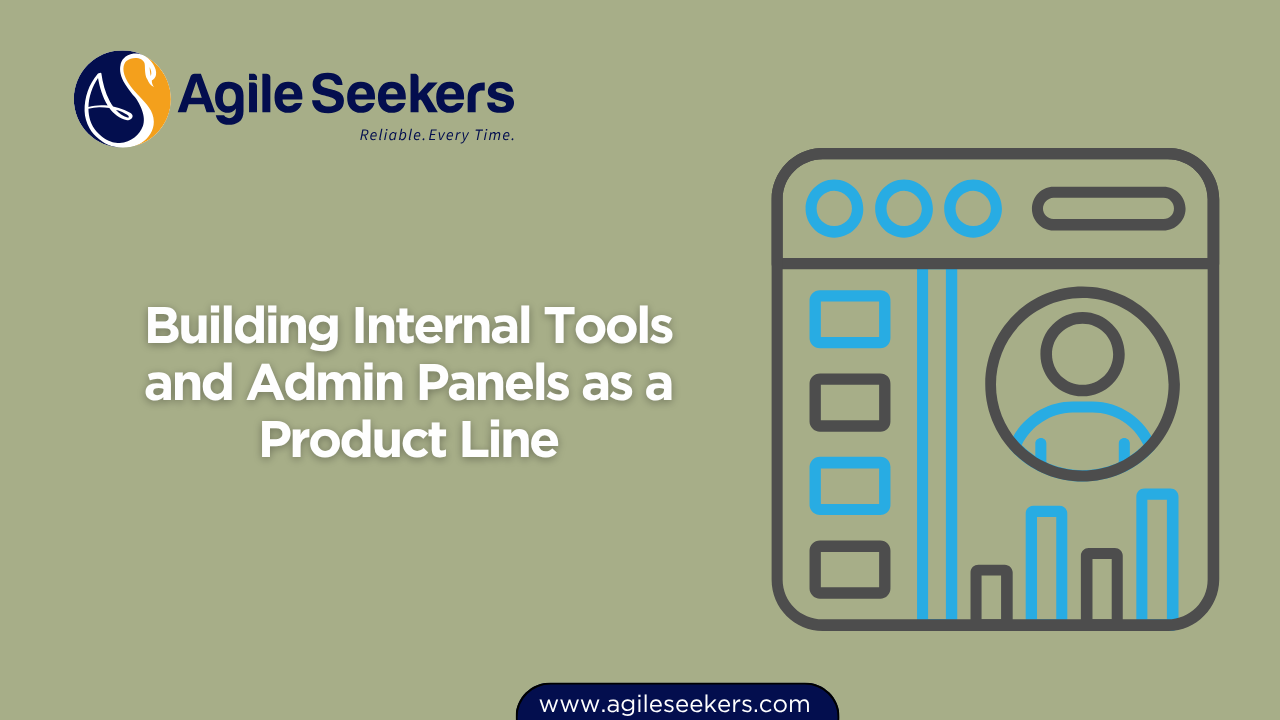Building Internal Tools and Admin Panels as a Product Line

Many companies treat internal tools and admin panels as one-off projects. They’re often developed reactively to support business functions like support operations, finance, HR, or sales. But when organizations start thinking of these tools as a cohesive product line, the value scales quickly. Internal tooling, if built strategically, improves productivity, reduces dependency on engineering, and supports operational excellence across teams.
This post explores the strategic advantages of treating internal tools and admin panels as a product line. It covers the value, structure, challenges, and best practices for implementation.
Why Treat Internal Tools as a Product Line?
1. Centralized Ownership & Product Thinking
When internal tools are scattered and owned by different teams, consistency disappears. Centralizing ownership under a product team—ideally with a dedicated Product Owner—improves usability and prioritization. This aligns with the SAFe POPM Certification, which emphasizes customer-centric product management, even for internal customers.
2. Cost Savings through Platform Thinking
Reusable components like authentication modules, audit logging, permissions frameworks, and data query interfaces save development time. Building once and reusing across tools leads to lower maintenance and fewer bugs. A unified platform approach mirrors the best practices taught in Project Management Professional (PMP) certification, especially around scope and resource management.
3. User Experience and Adoption
Internal users—support agents, ops teams, finance analysts—are often left with clunky tools. Investing in usability and clear workflows improves their productivity. It also reduces shadow IT or Excel-based workarounds.
4. Strategic Visibility
Well-managed internal products provide a clear view of operational workflows. Product analytics, usage telemetry, and feedback loops improve understanding of internal bottlenecks.
Use Cases: What Falls Under Internal Tooling?
Internal tools can include:
-
Admin panels for support teams to handle refunds, customer flags, and escalations
-
Dashboards for ops and logistics teams
-
Rule engines for finance teams to modify billing behavior
-
UI for A/B test configurations
-
Feature flag management panels
-
Data extraction tools for analysts
Instead of building each in isolation, product teams can use a shared component library and common infrastructure. This aligns efforts and accelerates delivery.
Structuring Internal Tools as a Product Line
1. Define Product Ownership
Assign a dedicated product manager or product owner. This person acts as the voice of internal users. The role closely resembles what’s expected from a SAFE Product Owner/Manager certification holder.
2. Segment by Use Case or Business Function
Group tools around logical domains: customer ops, finance, logistics, etc. Each segment can use a base platform but tailor features to specific needs.
3. Create a Platform Team
This team owns shared libraries (UI components, permission management, data connectors). They ensure consistency and performance across all internal tools.
4. Define APIs and Contracts
All internal tools should communicate via well-defined APIs. This allows engineers to replace or update services without breaking dependent tools.
Implementation Challenges and How to Solve Them
1. Tooling Isn’t Prioritized
Often, internal tools take a back seat to customer-facing features. Elevate their importance by measuring operational KPIs like support resolution time, internal ticket volumes, and manual escalations.
2. Fragmentation of Ownership
Without clear ownership, tool maintenance suffers. Treat internal tools like any product. Assign clear ownership, set roadmaps, and plan sprints.
3. Resistance to Change
Users might prefer legacy workflows. Use gradual rollouts, training, and user feedback sessions to drive adoption.
4. Security and Permissions
Internal tools deal with sensitive data. Build role-based access control from the start. Ensure audit trails and compliance standards are embedded.
Best Practices for Long-Term Success
-
User Research Isn’t Optional: Talk to internal users as you would to customers. Capture pain points, observe behavior, and iterate.
-
Build Extensible Frameworks: Allow teams to configure behavior without coding—using rules, toggles, and templates.
-
Maintain Design Consistency: Use a shared design system for internal tools. It builds trust and reduces training needs.
-
Instrument Everything: Capture metrics on tool usage, errors, and success. Drive improvements based on data.
-
Document and Onboard: Even for internal tools, provide documentation, training sessions, and support channels.
Measuring Success of Internal Tool Products
Key metrics to track:
-
Reduction in internal support tickets
-
Number of manual processes automated
-
Time saved per user per task
-
Employee satisfaction or NPS for internal tools
-
Adoption rate across business functions
Reporting on these outcomes reinforces the ROI of treating internal tools like any other product investment.
Conclusion
Internal tools and admin panels aren’t just operational necessities. They’re enablers of efficiency, autonomy, and scalability. With structured ownership, platform consistency, and user-focused design, they can become a product line that supports every department.
For teams exploring product roles in internal tooling, upskilling through SAFe POPM training or a globally recognized PMP certification training adds value.
Also, explore Retool, Internal.io, or Appsmith for low-code platforms that accelerate internal tool development.
Done right, internal tooling isn’t just overhead—it becomes a multiplier.
Also read - Defining Performance Budgets and Latency Thresholds for Features
Also see - Partnering with Security Teams for Threat Modeling in Features




















